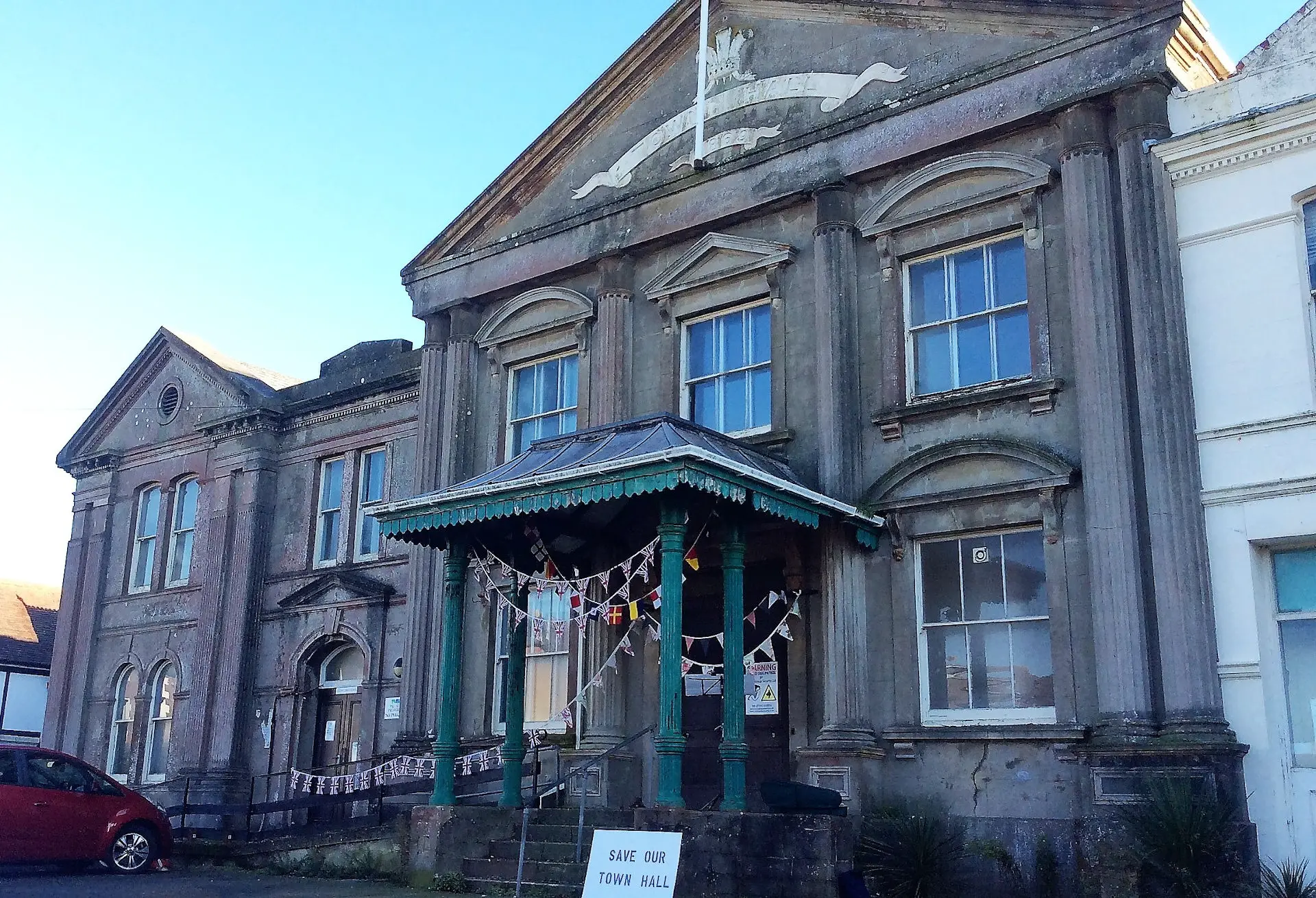Today (Monday) is the official deadline for comments on the Isle of Wight council’s application to demolish parts of Old Town Hall in Sandown and redevelop the site with private housing.
Comments can be made via the council’s Website (ref: 20/00456/LBC) and although 13th July is the official deadline on the system, residents can comment right up until a decision is made (possibly by the Planning Committee).
Assessing surviving heritage denied
Last week News OnTheWight mentioned that concerned residents had been denied access to the building in order to survey the surviving heritage. They told us that member of the public has not been able to get inside for the last three years.
It has now come to light that, hidden under layers of paint in the Old Town Hall, there could possibly be an array of Victorian frescos designed and painted by the artist, Henry Tooth.
The missing Tooth
Art curator Simon Avery has been on an investigative trail over recent weeks, trying to find out as much as he can about this artist, who was described by Christopher Dresser (one of the first and most important, independent designers) as “a genius”.
The Isle of Wight County Record office has evidence that Henry Tooth was commissioned to paint the Old Town Hall, but the council’s own archaeologist has said they visited the site in June but could not find evidence of this.
Simon believes the frescos could be covered by layers of paint, and that they are an incredibly significant piece of art heritage that should be protected.
A self-taught artist who more than proved his worth
Sharing some his research about Henry Tooth, Simon explained that he first emerged on the Isle of Wight back in 1868, when he answered an advertisement placed by Mr Chiverton, a decorator, of George Street Ryde, searching for apprentices.
Simon explains,
“By the end of that year, Mr Tooth, a self-taught artist had proved his worth and was to be found creating scenery for Tableaux Vivants held at the Ryde home of Sir John and Lady Lees, ‘the scenes were admirably painted by Mr Tooth, assistant to Mr Chiverton of High Street’.
“Present at these soirees are the aristocracy of Ryde and beyond. Tooth obviously impressed and by 1873 he’d obtained the commission to paint Sandown Town Hall, a building opened in 1870, but not decorated to a befitting standard.”
Dresser: “I hope for a bright future”
One day whilst working on this contract, two gentlemen came to look around, one of them, Dr Christopher Dresser immediately recognised in the decorations the work of an unknown follower. After enquiries, he was introduced to Tooth.
Dresser describes this moment.
“That the lessons as given in the Technical Educator have not been written wholly in vain I already know. Whilst revising these notes I had the opportunity of visiting a provincial town hall which I heard was being decorated, and was pleasingly surprised to see decoration of some considerable merit, and evidences of much as I saw had resulted from consideration of my articles in The Technical Educator.
“The artist engaged upon the work, although having suffered the disadvantage of apprenticeship to a butcher, has established himself as a decorator while still a young man. I hope for a bright future for one who, as a working man, must have studied hard.”
Smitten by Tooth’s talents
Simon goes on to add,
“Dresser, having met Henry Tooth was so smitten by his talents that he employed him to work on the decorations at Alexander Palace in September, 1873.
“Dresser had been given the job of art director by The Alexander Palace Company. The brief, to have permanent exhibits with an international flavour. They included a Japanese village, a Moorish house and an Egyptian house. Henry Tooth was left in charge of putting these exhibits together.”
A high-class decorator
During the following years Tooth continued to establish himself as a high-class decorator and is believed, according to Arthur Fuller, to have carried out commission work with Christopher Dresser. Arthur Fuller from Ryde was in fact to become the first apprentice at Linthorpe Art Pottery.
Included in his workload, Tooth carried out commissions to decorate for Royal visits, notably The Crown Prince of Germany in 1874.
“Genius” could turn his artistic hand to any skills needed
Dresser had enough faith in his abilities that he believed, in his own words, this genius could turn his artistic hand to any skills needed.
Therefore circa 1878, Dresser approached Linthorpe brickworks and persuaded the owner to turn the establishment into an art pottery/complex organising glass and wallpaper production as well.
Simon said,
“Tooth was a dab hand at glasswork too, probably the reason the glazes produced at Linthorpe were so mind blowingly good. Tooth however had no pottery skills and so stopped off at TG Green on the way to Linthorpe for a crash course.
“He took to it like a duck to water. Within months Linthorpe was opened, Tooth took two journeymen from the Island and the rest is history.”
The two journeymen mentioned by Simon were Arthur Fuller and Richard W Patey – the latter succeeded Tooth as manager of Linthorpe when he left to set up the Bretby Art Pottery in Derbyshire with William Ault .
January 2020 saw a celebration by members of the Sandown community marking 150 years since it was first opened.
Image: © Claire Hector





